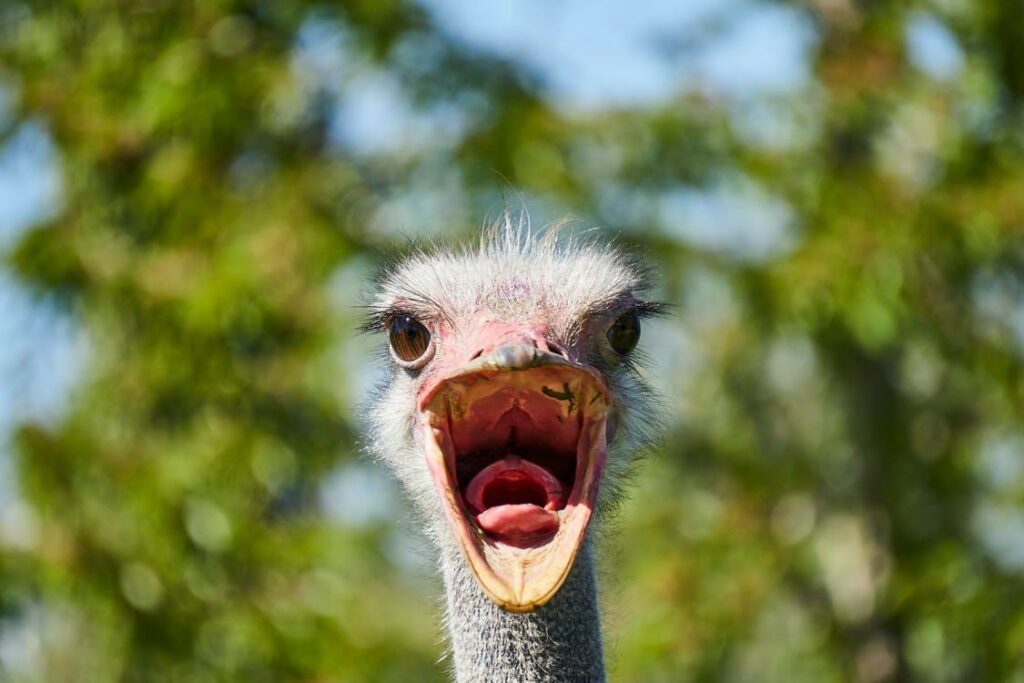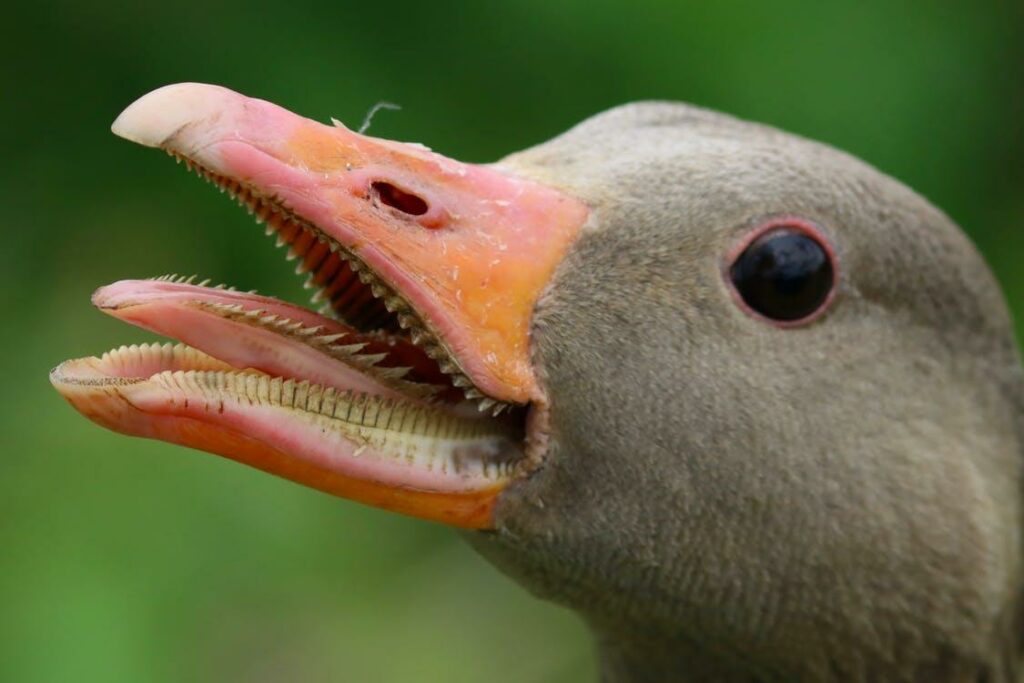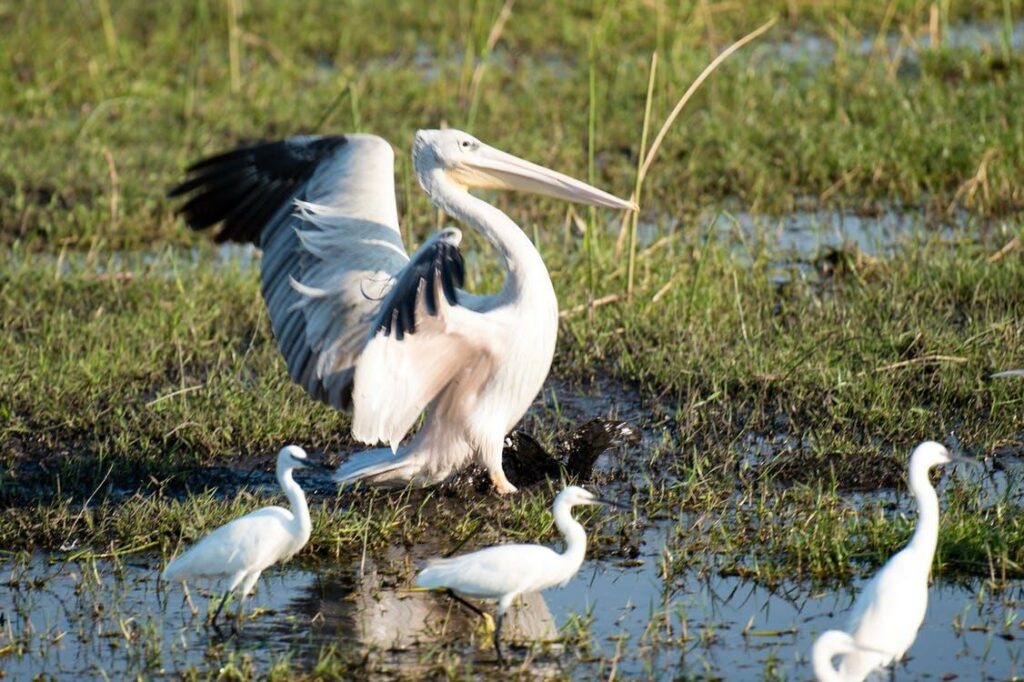Yes, It Is True That Birds Have Tongues.
The tissue that is seen in tongues originally showed up in the mouths of ancient fish that has been around ever since terrestrial organisms have been around. There are many different evolutionary orders of tetrapods, and each one is highly different from the others.
The tongue serves significantly different purposes in each of these orders. Mammals have a huge tongue that is loaded with muscles, which not only assists them in swallowing but also moves food about within their mouths when they chew. This allows them to digest food more efficiently.
The way that different species of birds have chosen to live has had a considerable influence on the development of their tongues over the course of their evolutionary history.
They are all similar in the sense that they have a muscle that enables the tongue to move up and down and that they have a bone known as the paraglossals bone that enables them to manipulate food in some way. These two characteristics allow them to perform the same functions.



General Physiology of a Bird’s Tongue
1. Bones
There are bones and cartilage present in the tongues of all birds. This structure, which is known as the hyoid apparatus, makes it possible for the tongue to move around easily. Tongues that are smaller than average may only be made of cartilage, while tongues that are bigger will have bones that are more fully formed.
2. Epithelium
The layer of cells that cover the tongue of a bird is referred to as the epithelium. Some birds have tongues that have a coating that is hardened at the tip of the tongue. This part of the nail is known as the lingual nail.
3. Lingual Nail
This is the calcified tip that can be found on the tongues of certain birds, such as parrots, ducks, swans, geese, and chickens. These birds are able to gather seeds and grains by using their tongues like spoons because the structure of their tongues is formed of keratin.
4. Papillae
On the tongues of birds of prey and geese are structures that resemble barbs and are called papillae. Papillae are found on both. These barbs are bent backwards, which makes it easier for food to get into the gullet.
5. Salivary Glands
Salivary glands can be found on the tongues of all birds. Saliva is produced by them, just like it is by our tongues, as a defense mechanism against bacteria and pathogens. The meal is also helped to be moistened by the saliva, which makes it easier for it to be broken down.
6. Different Markings and Colours
In the same way that bird tongues may be found in a wide variety of forms and sizes, they can also be found in a variety of colors, and some of them even have distinct markings. Some bird species have tongues that are marked with dots or may have bands of color on them. Many hues, including black, pink, and blue, have been ascribed to the tongues of numerous bird species.
Morphology of Birds Tongue
A bird’s tongue is located close to the bottom of its beak. The term “lingual apparatus” encompasses their tongue in its entirety. The tongue is used to chew food and swallow it by birds. In addition to this, they employ their tongues in order to communicate with other species of birds. The posture and positioning of a bird’s tongue are controlled by extrinsic muscles, which are located on the surface of the tongue. On the surface of a bird’s tongue are sensory receptors that are sensitive to touch. Before they can swallow food, these receptors help them find it and put it in the right place so they can swallow it.
What are the different Types of Bird Tongues?
Not only do birds use their tongues to eat, but they also use their tongues for a variety of other activities. It is possible for the function of a bird’s tongue to change depending on the species. Because of this, different species of birds each have their own unique tongue. There are a great number of varying examples.
- Grooved Tongue
This particular type of tongue is found in birds that eat the carcasses of deceased animals. Grooves can be found on the tongues of birds of prey such as vultures and eagles. There is a short window of opportunity for vultures to feast on a deceased animal before they must move out of the way so that other vultures can take their place. Because of this arrangement, birds only have a very short window of opportunity to find and consume food.

A vulture will therefore take advantage of this opportunity to hoard as much food as it possibly can. The crop is a specialized organ located in their throats that allows them to store food.
The grooved tongue of a vulture is used to force as much food as possible into the crop in the allotted length of time. Vultures are able to more readily reach the area of the bone that contains the marrow and extract all of the marrow from it because of the grooved form of their tongues.
- Muscular Tongue
A tongue that is thick and muscular like that of a parrot is a very key distinguishing feature of these birds. It is the tongues of parrots, not their beaks that are used to grasp and hold onto small, spherical, smooth food items such as nuts and seeds.
Their tongues are made up of highly robust muscles, which enables them to have a firm grip on the food they eat. This particular type of tongue can also be found in barbets and other fruit-eating birds. Parrots are capable of assuming a variety of forms and shapes thanks to the ability of the tiny muscles in their tongues to contract. Because of this, parrots are able to produce noises similar to those of people and other animals, as well as mimic those sounds.
- Piston like Tongue
Flamingos and pigeons, among other birds, frequently have tongues that look like this. This kind of tongue, whose name seems just as unusual as it actually is, gives birds a great deal of freedom when they are sipping water. When drinking water, these birds do not have to tip their heads backwards like other types of birds do.
They have something that is really analogous to having a straw incorporated right into the product. They generate a pressure difference by using their tongue in a way similar to that of a piston. Because of this movement, birds are able to take in water through their natural drinking behavior. Flamingos are able to consume the microplankton that is found in the water thanks to their unique ability to use their tongue in this way.
- Sticky Tongues
Birds that attack their prey with their tongues have a specific form of the tongue called an assault tongue. The woodpecker is an excellent example of one of these types of birds. They are able to extract their prey, such as insects, from tight places or holes by utilizing their sticky tongues.
Their prey becomes adhered to their extremely sticky tongue, which is then pushed into the hiding spot of the victim. Woodpeckers are able to drill holes in the bark of trees with their sharp beaks because of the cushioning provided by their sticky tongues.
- Nectarine Tongues
As its name suggests, the nectarine tongue is utilized in the process of sucking the nectar out of blossoms. Nectar However, nectarine tongues are not all identical in appearance, and their appearance might change depending on the species. A nectarine tongue is a tongue that is very thin and has little projections at the tip of the tongue that resemble small brushes. An Oriental White Eye has a nectarine tongue. The Oriental White Eye scrapes nectar off the surface of a bloom using its beak. Sunbirds have tongues that are fashioned like tubes and have branches on them so that they may correctly sip nectar from flowers.
What do you know about the growth of bird’s Tongue
The expansion of a bird’s tongue is proportionate to its size in an exact one-to-one relationship. Nevertheless, if the size of the tongue is large, the rate of growth is rapid. If the tongue is tiny, the rate of growth is more gradual. When compared to other birds, such as owls, which have tongues that grow at an extremely snail’s pace, the tongue of a hummingbird is said to expand at an alarmingly quick rate.
Do the World’s Biggest Flying Birds Have Tongues?
The world’s largest flying birds with pictures may leave you wondering about their tongue situation. While not visible externally, these avian giants do have tongues. However, their tongues are relatively small compared to their enormous size and are not known to play a significant role in their feeding or survival.
What is the size of a bird’s Tongue?
Their tongues perform a variety of essential and one-of-a-kind functions throughout their bodies. Even birds don’t require teeth because their tongues do most of the job for them, so this eliminates the evolutionary pressure to develop them. The tongues of many birds are adapted to carry out a variety of tasks. The bird’s tongues, which come in a variety of sizes, allow them a wide range of functional capabilities. Tongues come in a variety of lengths depending on the size of the bird. In addition to this, the size of a bird’s tongue is also reliant on the size of a bird’s beak as well as the manner in which they search for and devour their food.
- Long Bird Tongue
There is one species of woodpecker known as the Northern Flicker. These birds are dispersed across the entirety of North America. The Northern Flicker takes pride in being the bird with the longest tongue in the animal kingdom. Their tongues can be up to 10 centimeters in length. They use their long, sticky tongue, just like a typical woodpecker, to fish insects out of tiny holes and cracks in the bark of trees.
Their tongue is able to navigate effortlessly through tight areas, so they may forage for insects. The hummingbird is another example of a bird that belongs to the group of animals that have tongues that are unusually lengthy. Because they are birds that feed on nectar, the tip of their long tongue is tubular.
- Short Bird Tongue
Pelicans, cormorants, and emus are examples of birds that are considered to be part of this group. These birds are able to ingest large portions of their food without shredding or grinding it because they have a very tiny tongues. Emus are able to successfully ingest small stones thanks to their short tongues. This capacity to ingest stones is incredibly important to the plot and plays a very fascinating part. Emus are able to utilize these stones to grind up their food, which can include seeds, vegetation, and even insects.

Is there any bird that has no tongue?
No, there are significant differences in the size and shape of the tongues of different birds, yet all birds have some sort of tongue.
Does a Crow has a Tongue?
Yes, A tongue is a part of the anatomy of every bird, even a crow. People think that if you cut the tongue of a crow, it will give them the ability to communicate verbally.
Do All Animals Have a Tongue?
Because of how frequently they use their tongues for feeding and communicating, the majority of amphibians, mammals, reptiles, and birds have them. There are some crustaceans and echinoderms that do not have tongues, such as those. The stomach is the opening via which sea stars take in their food.
Do Any Bird Species Have Teeth?
Because their tongues are so effective at chewing, birds do not have the same requirement for teeth that we have. On the other hand, the beaks of some birds, such as the Greylag Goose, feature serrations that resemble teeth around the margins.
They are able to better grasp food because of these structures, which are called tomia. The beaks of falcons, ducks, and geese are serrated, like the beaks of other birds such as hawks.
What’s a Penguin’s Tongue Like?
When we think of penguins, we see them as peaceful, waddling animals that form monogamous pairs for life and thrive in colder temperatures. Even though they may give off the impression of being kind, the reality of the situation within their mouths is quite different.
As a result of the fact that penguins consume their food while it is still alive, they require a method of retaining it, which is where their pointed serrations come in handy.
They carry them not just in their beaks and cheeks, but also in their tongues. Penguins have spiky tongues, which help them move their food more quickly through their digestive systems.
Do Birds Tongues have bones in them?
Indeed, they have five bones that work together to provide them with strength and support. The term “hyoid apparatus” refers to this collection of bones. The paraglossals, basihyale, urohyale, ceratobranchiate, and epibranchiate bones may all be found in their tongues.
Can Birds Lick Their Beaks With Their Tongues?
The majority of bird species do not lick their beaks, although certain species do use their tongues to clean the interior of their mouths. In an effort to obtain their owners’ attention, some parrots and lovebirds may lick their owners’ fingers.
Lovebirds will sometimes mimic this. Birds that don’t like to get their feathers dirty, like parrots, clean their beaks by rubbing them against trees and other surfaces to remove any remnants of food.
How different are Bird Tongues to Humans?
Chewing, swallowing, and speaking are all functions that are performed by the tongue in humans.
One of the unique characteristics of the tongue is that it is the only muscle in the body that is only attached to a single bone. In general, the tongues of birds are significantly more robust and difficult to control than those of humans. In addition, they have five bones in each of their tongues.
Birds typically have fewer than a couple hundred taste buds, with pigeons having as few as forty, in contrast to humans, who have 10,000 taste buds.
Similar to how we do it, parrots produce vowel-like sounds by moving their tongues in a way that is innate to them. The way parrots move their tongues to imitate the sounds we produce is fascinating to see.
Which Animal Has the Most Taste Buds?
A single catfish may have as many as 175,000 taste buds in its mouth. They have taste buds all over their bodies, but most of them are in their whiskers, which are the hairs that grow around their lips.











